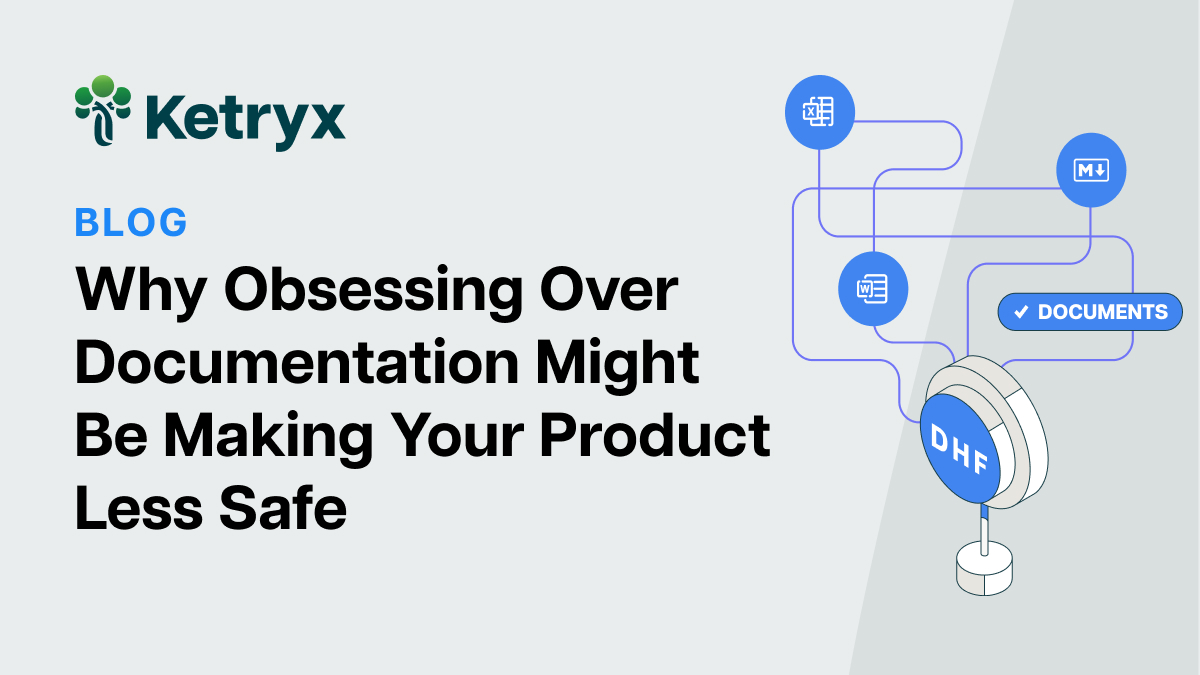
Why Obsessing Over Documentation Might Be Making Your Product Less Safe
Table of Contents
“We’ve never had a safety issue in the field because of documentation. But we have had issues because we were too focused on documentation to catch real problems.” - Software Development Manager, Top 10 global medical device company
In the life sciences, documentation is synonymous with safety. But what happens when your team becomes so focused on formatting documents that they miss flaws in the product itself?
Everyone in this industry understands that documentation is essential. It’s how you demonstrate compliance with standards like IEC 62304, ISO 14971, and FDA or EU MDR guidance. It’s what auditors look at.
But better documentation doesn’t always mean safer products. In fact, for many regulated teams, the opposite can be true.
The pressure to spend hours creating perfect documentation can take teams away from efforts to improve actual product quality.
This is the hidden risk of being document-centric: when teams prioritize the appearance of compliance over the reality of product quality, they may be inadvertently increasing the very risks they’re trying to prevent.
Documentation Expectations
Quality teams are deeply committed to safety and compliance. A large part of compliance is delivering the documentation that regulatory bodies expect. Standards like IEC 62304, ISO 14971, and ISO 13485 lay out documentation expectations. Quality teams are expected to have a comprehensive Design History File including documents like:
- Software Requirements Specification (SRS)
- Software Architecture and Detailed Design
- Risk Management File
- Design and Development Documentation
Generating all this documentation is time-consuming but crucial when it comes to the development of medical devices.

When “Perfect Documentation” Becomes a Liability
In trying to meet expectations for documentation, teams can fall into a trap: they start spending more time on documenting the product than working on the product itself.
When developers are spending 30-80% of their time documenting work—copying content between systems, formatting Word documents, and manually updating traceability matrices—they’re not spending that time improving the product. Safety-critical patches sit in limbo as documentation gets checked and re-checked.
“Our software release process is heavily manual. The developer teams conduct all the actions on Jira, then manually export tests (from Xray, for example) in a PDF to collate all release info on a Confluence page containing our release notes. Meanwhile, our Quality and Regulatory team manages the technical change record on our eQMS. The process is full of manual checkpoints that are error-prone and make it near-impossible to be agile in documenting urgent releases like bug fixes.” - Quality Lead, AI-based SaMD startup
The Regulatory Paradox
Focusing on documentation over product quality creates a false sense of security. When teams spend hours on formatting documents, that’s time diverted away from managing critical risks.
“We can’t sacrifice our compliance to the standards, but that means the developers are limited in their actual hands-on-keyboard developer work.” - Software engineering leader, global healthtech company
This is the paradox: to stay compliant, we spend so much time on documentation that we lose sight of the actual thing being documented.
Documentation as a Byproduct of Quality
But it doesn’t have to be this way. Regulated teams are starting to rethink how they approach documentation—not as a separate, manual effort, but as a natural byproduct of good, compliant development practices.
When you focus on building high-quality products, documentation becomes an artifact of the work:
- Every test result is captured and automatically traced to the associated requirements and risks, generating audit-ready documentation in real time.
- Every release builds a submission-ready DHF, trace matrix, and audit report without copy-pasting from Jira or Excel.
- And with tools like Ketryx, these records are generated inside the tools your team already uses—like Jira, GitHub, and Xray—ensuring no quality activity gets skipped or delayed.
For regulated teams to innovate and scale, focusing on product quality naturally improves document quality.
Zero-Lag Compliance
Perfecting the paper trail can feel like the safest way to prove compliance. But when that trail leads you away from product safety—making you slower to release a potentially life-saving patch—it can actually increase the risks your team is trying to prevent.
By shifting the documentation process left, teams can achieve zero-lag compliance: traceability, validation, and documentation happen in real time, so that by the time code is complete, the documents are ready.
In our next post, we’ll explore how regulated teams are shifting from a waterfall approach to a truly agile approach, and how this is helping them release compliant products faster.

Lee Chickering is a Director of Client Operations at Ketryx and an expert in quality assurance and regulatory compliance, specializing in bridging quality management and customer success to drive operational excellence in the life sciences industry. With a diverse background spanning manufacturing, project management, and compliance at companies like Amgen, he has led the implementation of Quality Management Systems (QMS) aligned with ISO 13485, ISO 14971, and IEC 62304. Passionate about advancing quality in life sciences, he thrives on collaborating with organizations to enhance efficiency, compliance, and innovation.



